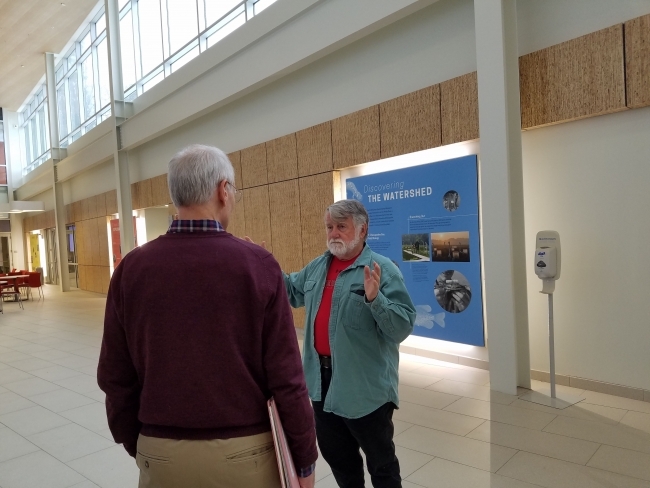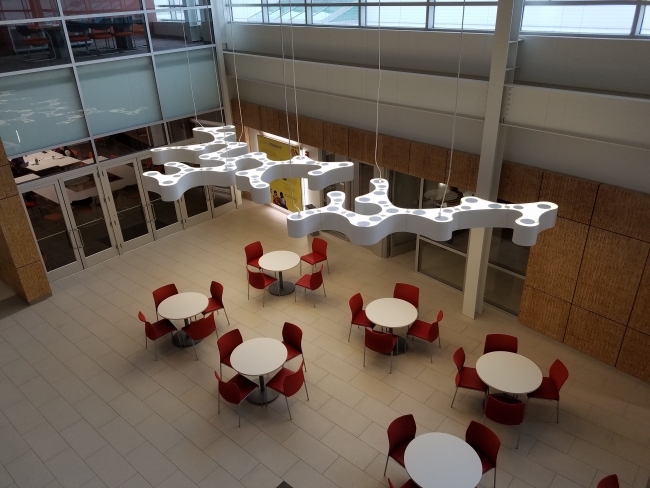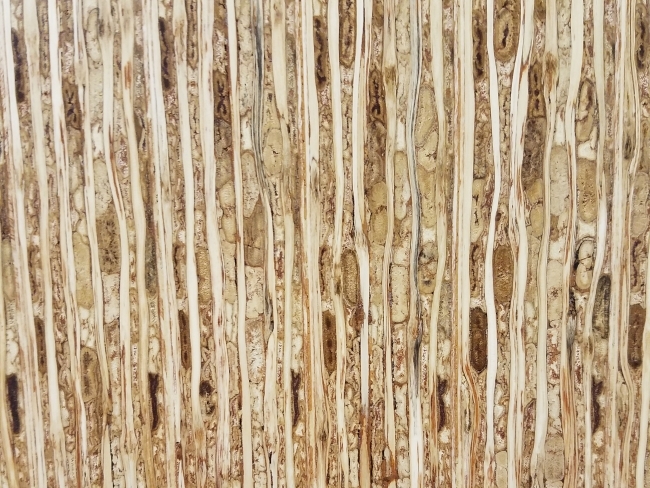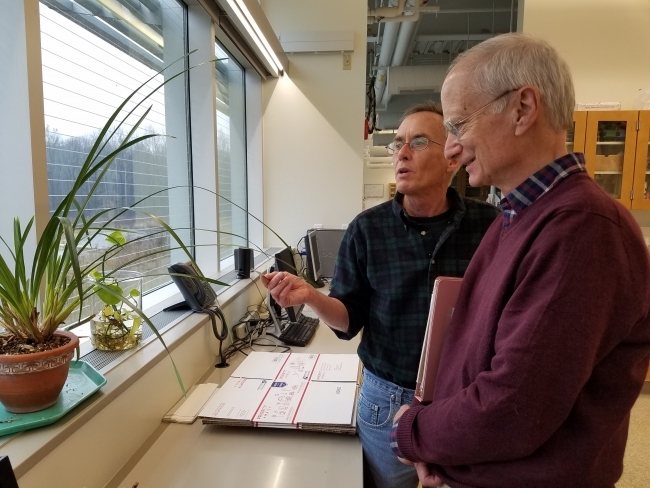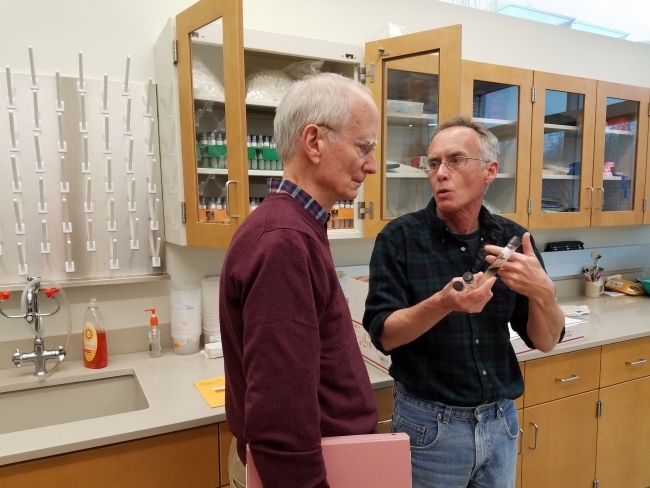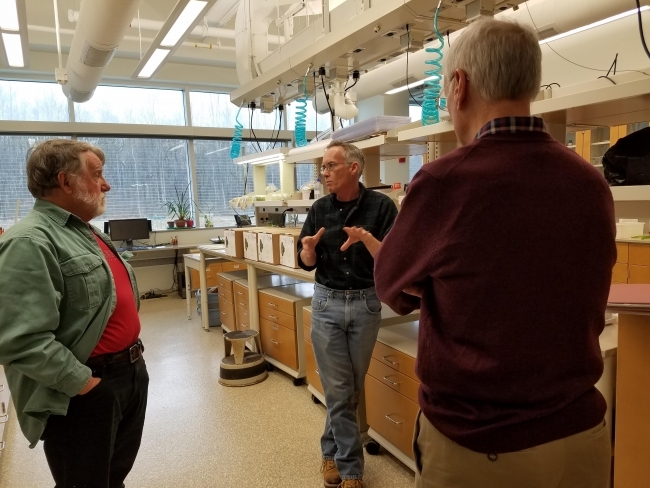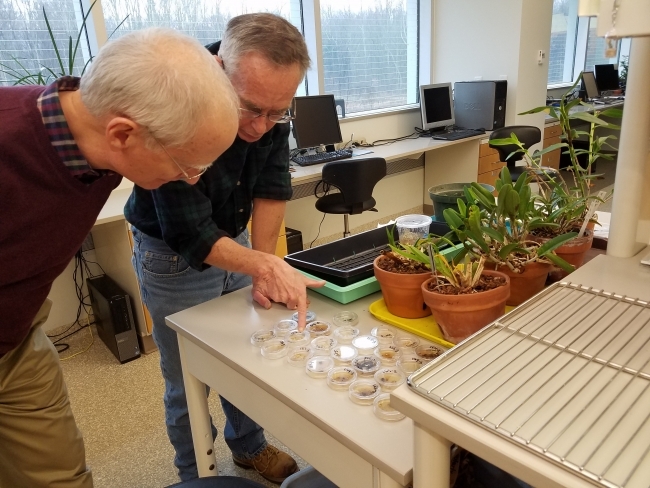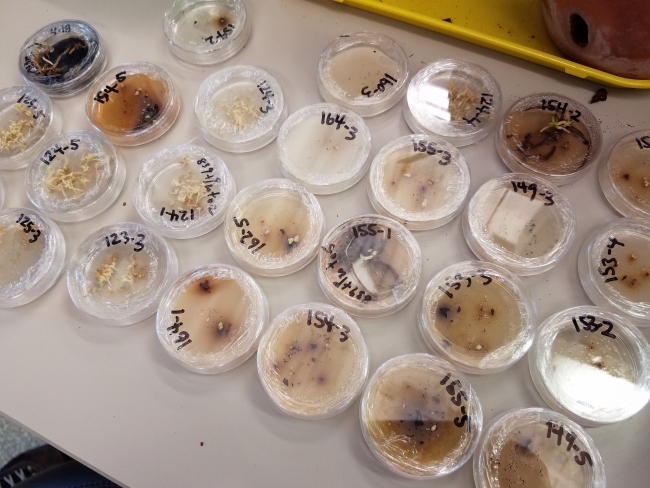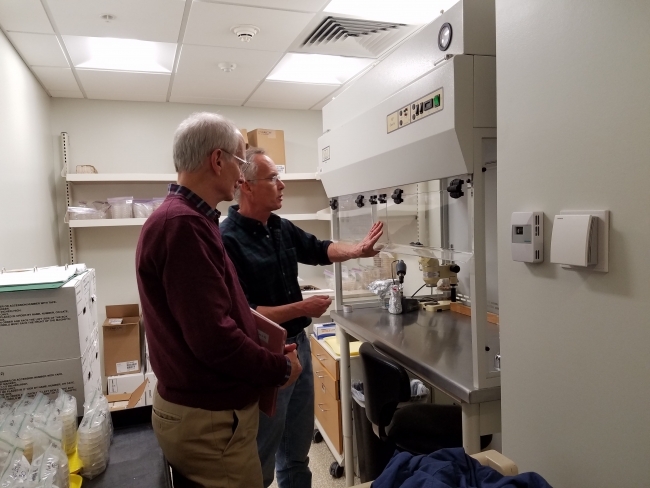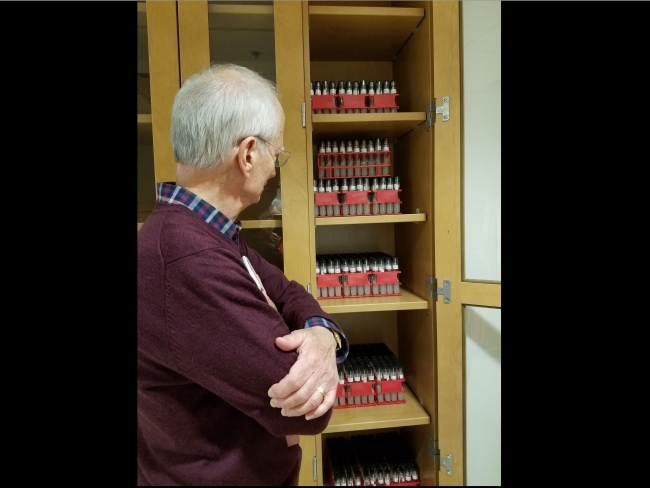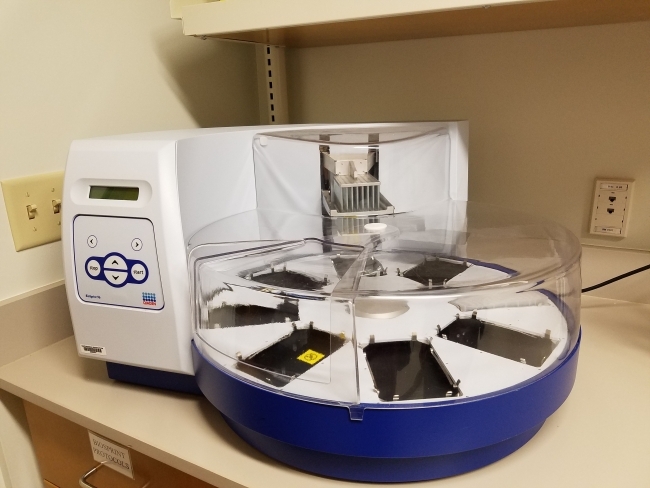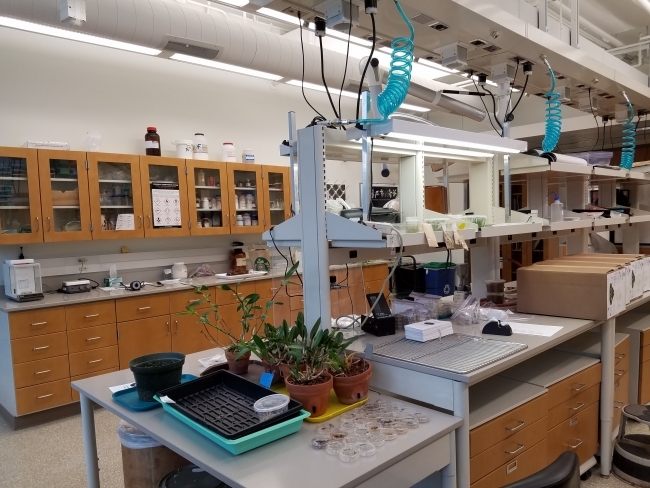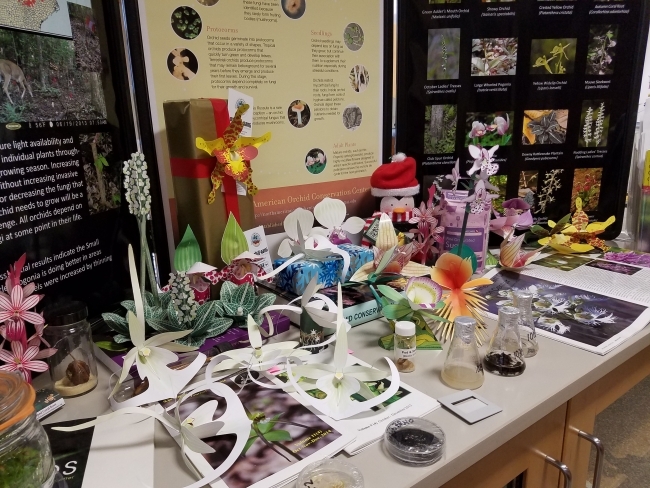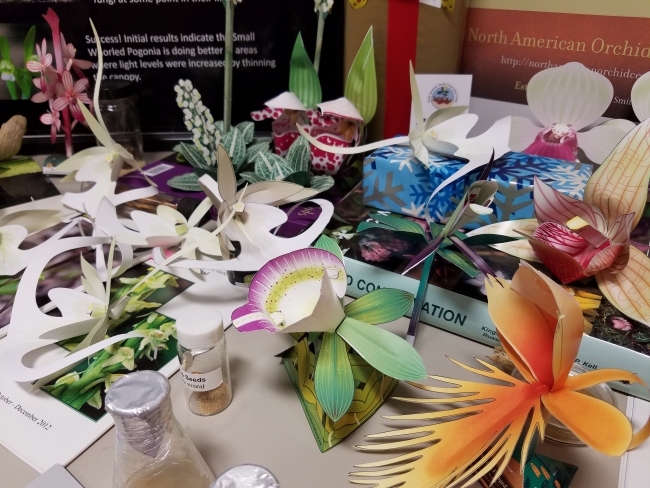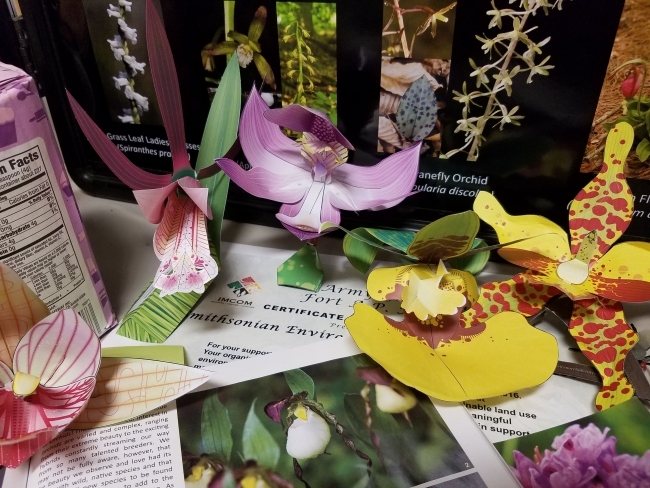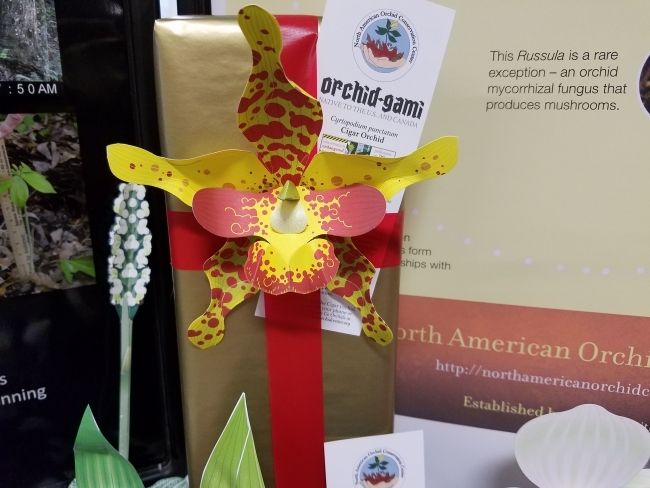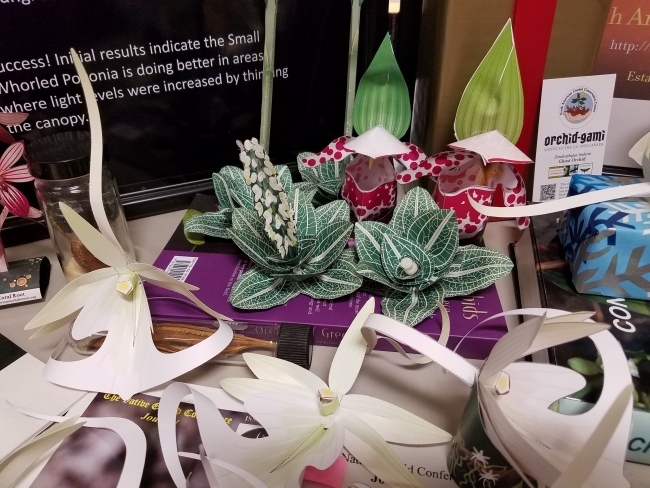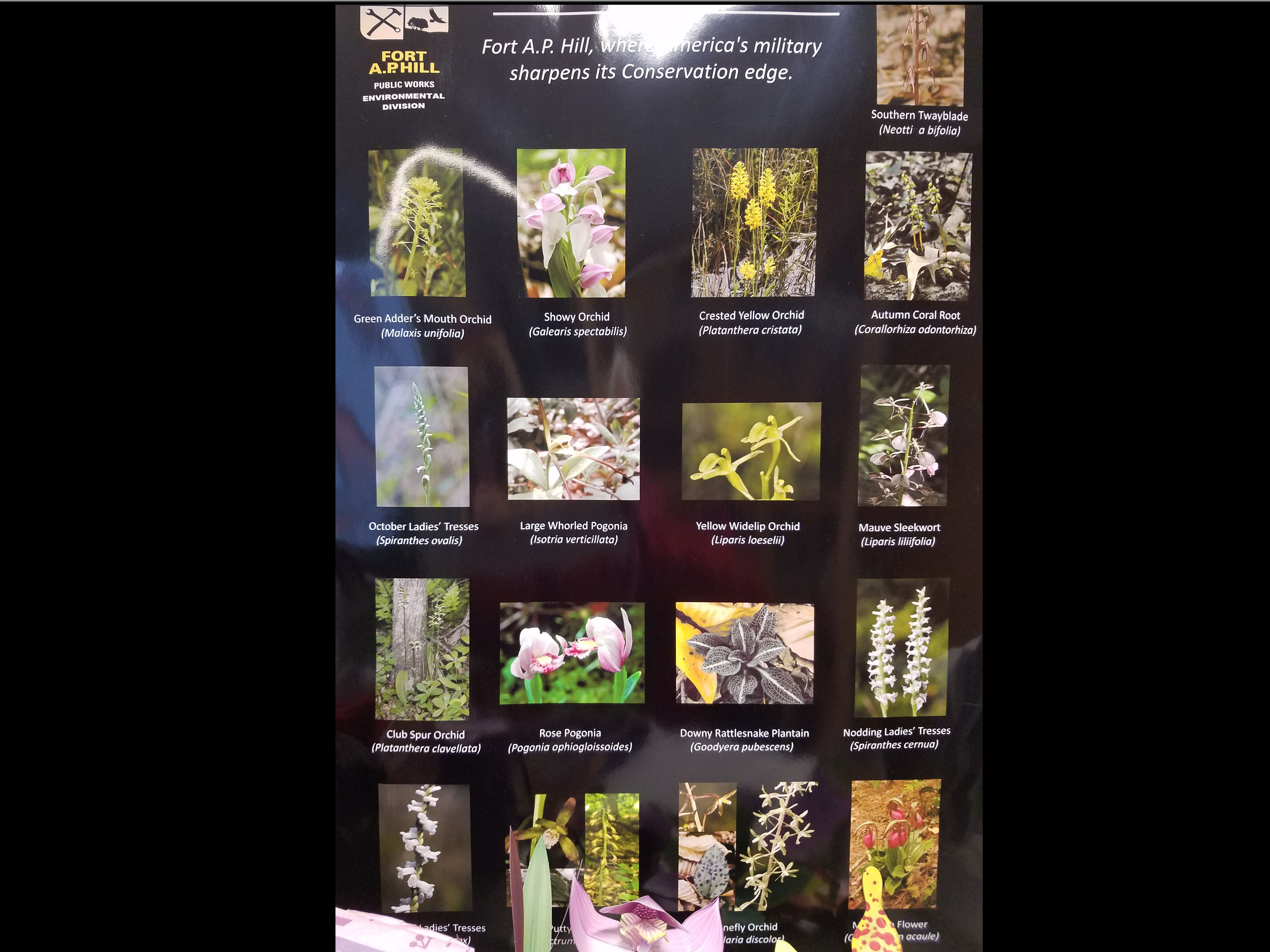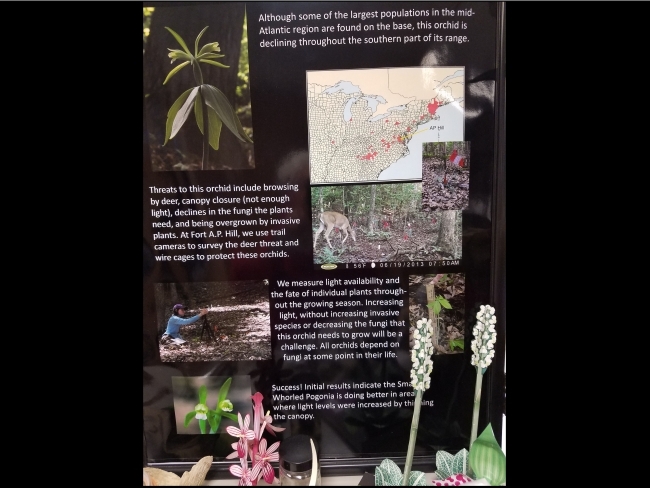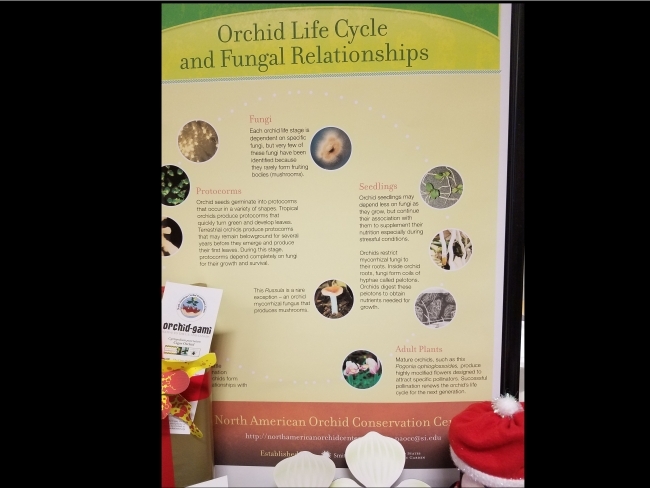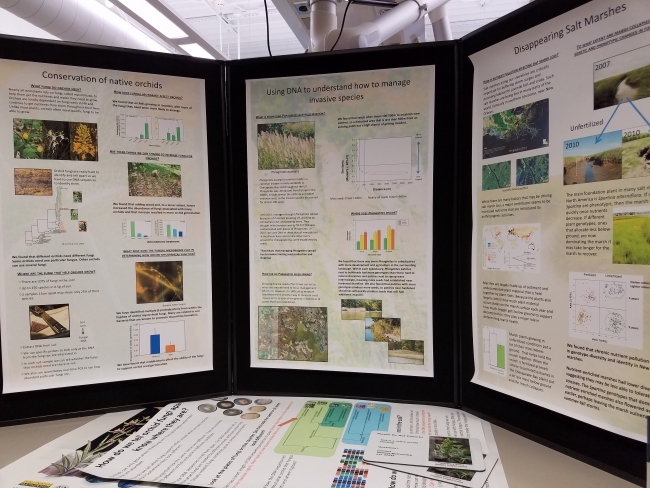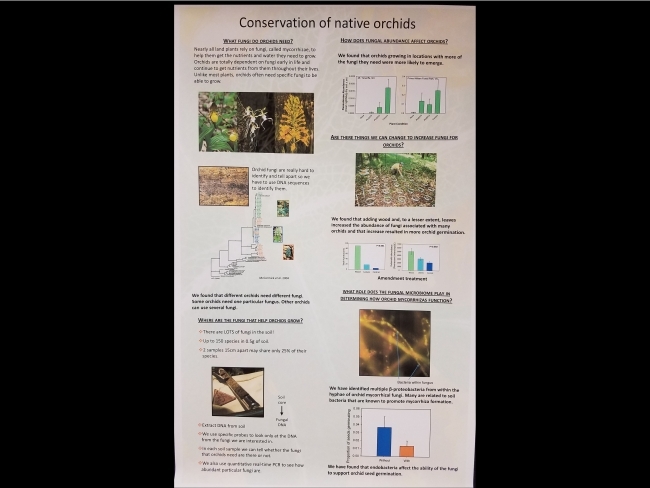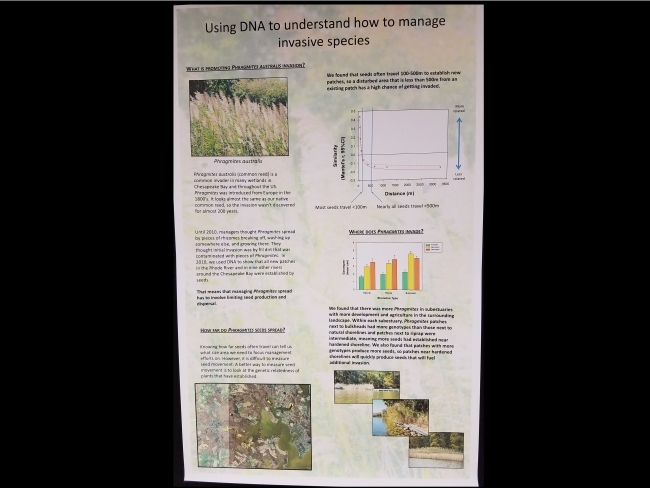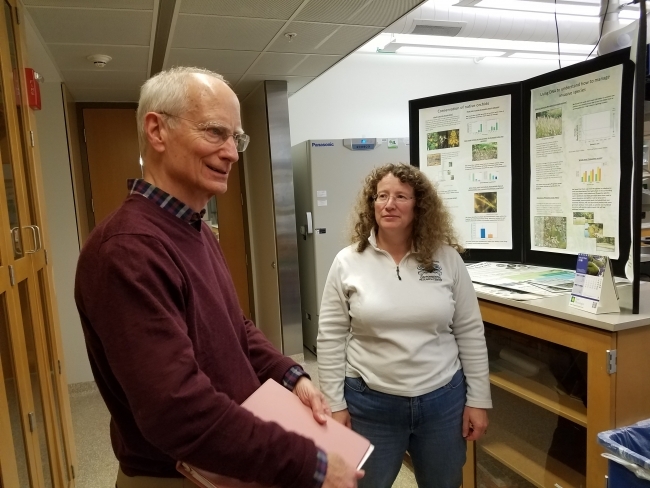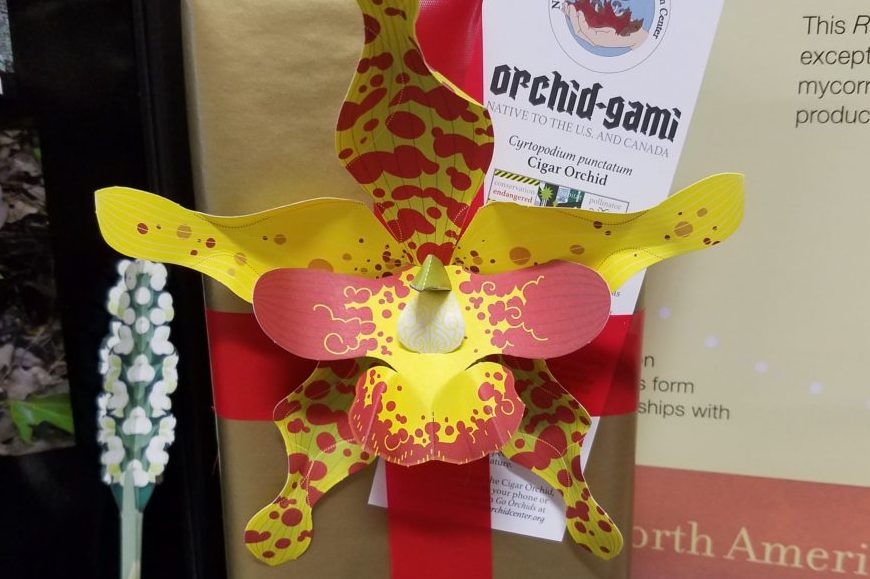
An Orchid Trip Come True – Orchid Conservation Up Close and Personal
To start the New Year off right, a big pat on the back to SWROGA (Southwest Regional Orchid Growers Association) for their support of our conservation fundraising efforts. SWROGA contributions are actively preserving orchid habitats and adding to scientific knowledge of the amazing local species we have literally right in our back yard.
Both the Rainforest Trust and the Smithsonian’s North American Orchid Conservation Center have important projects in the works, made possible partly by the support we give. We play an active role in their ultimate success.
Finally meeting our contacts from Rainforest Trust as well as from two Smithsonian facilities
After years of email correspondence, there is nothing like an actual meeting to feel the depth of appreciation from the organizations we support. This past December Trudy and I had the rare opportunity to enjoy that experience. At last the individuals with whom we had been corresponding had faces and personalities.
It all began last fall when we donated a print for the silent auction to be held by the Rainforest Trust. They were planning a party to celebrate their 22nd year of conservation work. One of their donors owns a beautiful restaurant in Washington, D.C., near their Virginia headquarters, and this donor generously hosted the party. Along with the Rainforest Trust’s Thank You note for the print, they sent us an invitation with the question: “Do you think you would be in the DC area at that date?” It didn’t take us long to make the decision to go. We had been wanting to visit them in person, and also visIt the Smithsonian museums. What we especially wanted to see was the Smithsonian’s Environmental Research Center (SERC), as well as the extensive Smithsonian orchid greenhouses in Suitland, MD.
The Rainforest Trust celebrates an anniversary with a review of conservation projects – past, present, and future
What a grand beginning to the holiday season! Seeing D.C. all decked out for Christmas, and at the same time attending the Rainforest Trust anniversary dinner, where we met the talent behind this dynamic preservation initiative. In addition to a lovely social hour and dinner, we had conversations with the directors for various regions around the world. I even met a botanist who had been personally acquainted with my inspiration Margaret Mee, whose breathtaking botanical art has been the motivating factor in my mission of conservation.
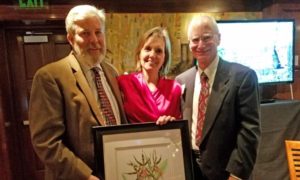 Following the CEO’s presentation on 2016 successes, many of which have had support from SWROGA members, I had the honor of being asked to end the evening’s festivities by sharing my story with the other guests about how we had become “Rainforest Trust supporters”, and why we value their work. That is what happens when you travel all the way from Dallas! The distance alone defined us as celebrities, including picture taking with the winners of the auction for the donated print.
Following the CEO’s presentation on 2016 successes, many of which have had support from SWROGA members, I had the honor of being asked to end the evening’s festivities by sharing my story with the other guests about how we had become “Rainforest Trust supporters”, and why we value their work. That is what happens when you travel all the way from Dallas! The distance alone defined us as celebrities, including picture taking with the winners of the auction for the donated print.
A fascinating and educational visit – seeing orchid conservation research up close
Another day of the trip was devoted to a tour of the Smithsonian Environmental Research Center (SERC), the center of activity for the SWROGA supported North American Orchid Conservation Center (NAOCC). To finally meet Dr. Dennis Whigham, Jay O’Neill, and Melissa McCormick, and see the facilities where their research is being done, was an opportunity that I had not ever imagined taking place.
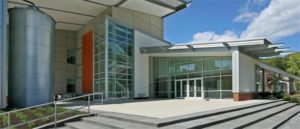 The SERC Plant and Molecular Ecology labs support research both on orchids, and on the Chesapeake Watershed, including much of the wetlands along the river. It is appropriately located about an hour’s drive east of Washington DC. Seeing the facility itself is worth the trip. It is a world class research campus, built to LEED certification (Leadership in Energy and Environmental Design). The building was opened in 2014, replacing the historic facilities originally located in a renovated dairy barn. The property, donated to the Smithsonian in 1965, has a history that goes back all the way to 1652.
The SERC Plant and Molecular Ecology labs support research both on orchids, and on the Chesapeake Watershed, including much of the wetlands along the river. It is appropriately located about an hour’s drive east of Washington DC. Seeing the facility itself is worth the trip. It is a world class research campus, built to LEED certification (Leadership in Energy and Environmental Design). The building was opened in 2014, replacing the historic facilities originally located in a renovated dairy barn. The property, donated to the Smithsonian in 1965, has a history that goes back all the way to 1652.
Dennis and Jay gave us the grand tour, and we observed first-hand the sample vials of all the various fungi being studied, along with their effects on orchid germination and culture. This brought to life everything I’ve read about the need to store the exact species of fungi, as well as the orchid seeds to ensure future germination and propagation. The state of the art DNA research lab is shown here and is where Melissa and her team identify and sequence the countless fungi, many of which never take on a form that can be differentiated other than through DNA analysis. I learned from the experts at SERC how intimately orchids and fungi are tied in nature. Orchids like their particular fungus species, and often will refuse to grow and thrive without them. These photos show the highlights.
SERC is unique in the world for being dedicated to conserving orchids through an ecosystem approach. Understanding the interaction between orchids and their mycorrhizal fungi is essential to ensuring the survival of orchids in the wild and in botanical gardens.One of the goals of SERC is to promote interest in orchids among the younger generations. To that end, they have launched the “Orchid gami” project. This consists of a series of North American orchids, depicted on punch-out cards, which are made to be assembled into realistic, 3-D representations of the plants. Viewing this project rounded out the tour, and emphasized the education aspect of science supported by SERC as part of the mission of all the Smithsonian organizations. Read more about my visit to SERC here.
And for “dessert”, a visit to the Smithsonian Greenhouses – personal tour by orchid expert Tom Mirenda
Our 4-day DC visit also allowed us time to take in the spectacular display in the Botanical Gardens. For the 2016 holiday display the designers depicted the nation’s National Parks through models built along a winding railroad track. Orchids are always part of their botanical displays, which makes it especially interesting for me.
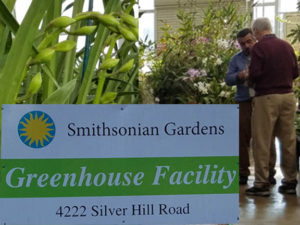 But the major conservation collection of orchids is housed in the remote Smithsonian Greenhouses, a good distance from the mall. Fortunately, we were able to schedule a tour of this collection, so generously arranged and conducted by Tom Mirenda. AOS subscribers will recognize Tom from the two articles every month he has been writing for the last 12 years. If you have read his bio, in addition to maintaining the greenhouse orchid collection, he lectures on orchids around the world.
But the major conservation collection of orchids is housed in the remote Smithsonian Greenhouses, a good distance from the mall. Fortunately, we were able to schedule a tour of this collection, so generously arranged and conducted by Tom Mirenda. AOS subscribers will recognize Tom from the two articles every month he has been writing for the last 12 years. If you have read his bio, in addition to maintaining the greenhouse orchid collection, he lectures on orchids around the world.
These remote greenhouses are in a large campus outside of DC in the community of Suitland, MD. From the name of the place you might guess it is smack-dab in the middle of DC (“Suitland!”), but it is actually located about 20 minutes by the Metro subway system, followed by a 15-minute walk from the Suitland station. The complex is known by the Smithsonian employees as the “attic” because this is where they store display materials not currently in use in the Smithsonian museum displays. It was not difficult to spot the dozen or so large greenhouses holding orchids and other tropicals.
As we walked through the many greenhouses, Trudy took hundreds of pictures, while I devoured orchid lore from Tom’s vast trove of knowledge. Photos from this tour can be viewed here.
Touring through these amazing greenhouses, I felt an overwhelming desire to buy some orchids. I was like a kid in a candy store. But none of these orchids had a price tag. They are not for sale. The good news is, I can continue to enjoy them for years to come, because we have so many pictures to remember them by.
Protecting orchids for the future — orchid conservation has many angles
Some of the plants had “bicycle” reflector stakes inserted in their pots. Tom explained that these reflectors are part of the emergency rescue plan whereby in the event of a fire or a natural disaster the most critical and important specimens could be rounded up, day or night, and moved to standby trucks with generator-powered climate controls. Learning of these plans increased my awareness of our responsibility, as well as the fragile nature of ex situ preservation. This greenhouse facility is a vital part of a network of cooperation around the country for maintaining living specimens.
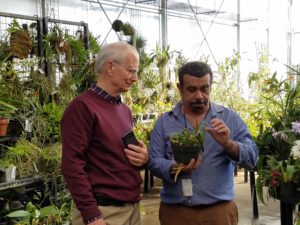 We were very fortunate to meet Tom in person. But you can do the next best thing by listening to the podcast of an interview on the website www.indefenseofplants.com. Go to the Podcast section and look for Episode 79. You will learn about Tom’s history with marine biology, his experiences in Hawaii, and the story of how he found his way to the Smithsonian. His expertise is quite remarkable, and you will enjoy increasing your orchid knowledge from him. Also, if you are not already doing so, be sure to read his articles in AOS Orchids. What you will read in Tom’s articles is always fascinating and often surprising. I certainly consider him the international ambassador for orchids and their conservation.
We were very fortunate to meet Tom in person. But you can do the next best thing by listening to the podcast of an interview on the website www.indefenseofplants.com. Go to the Podcast section and look for Episode 79. You will learn about Tom’s history with marine biology, his experiences in Hawaii, and the story of how he found his way to the Smithsonian. His expertise is quite remarkable, and you will enjoy increasing your orchid knowledge from him. Also, if you are not already doing so, be sure to read his articles in AOS Orchids. What you will read in Tom’s articles is always fascinating and often surprising. I certainly consider him the international ambassador for orchids and their conservation.
Our D.C. trip turned out to be so much more than we ever expected. Starting with the Rainforest Trust event one evening, and continuing with the day at SERC, and another day at the Smithsonian Greenhouse facility, added a great deal to my knowledge or orchids, and my determination to continue our efforts to do all we can to ensure the survival of these amazing plants.![]()
